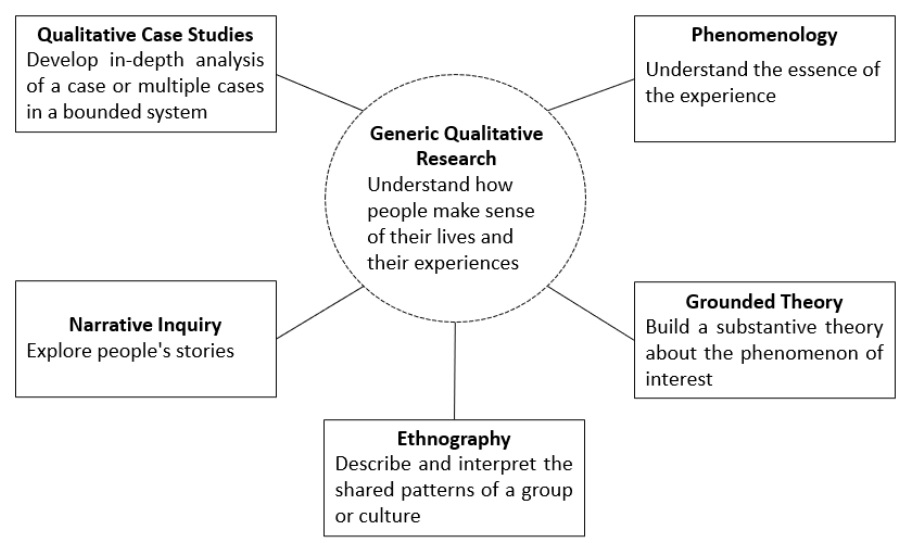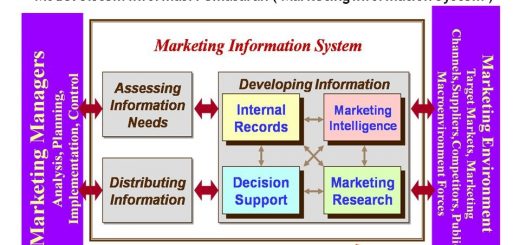RISET KUALITATIF GENERIK
Penelitian kualitatif dianggap susah karena jenis-jenisnya banyak, bahkan ada yang membaginya menjadi 46 jenis (Tesch, 2013). Peneliti pemula pasti akan kesulitan untuk memulainya karena harus mempelajari satu per satu asumsi filosofis dan metodologis masing-masing jenis penelitian. Untuk itu Merriam dan Tisdell (2018) mengusulkan riset kualitatif generik, yang tidak mensyaratkan keterikatan dengan berbagai metode penelitian kualitatif. Mereka menjelaskannya dengan menggunakan paradigma interpretif, bukan paradigma post-positivisme maupun paradigma pragmatisme (mixed methods).
Nama lain: Basic, generic or interpretive qualitative research, interpretive description, basic or fundamental qualitative description. Penjelasannya secara sederhana:
Metode Riset Kualitatif Generik
1. Sampling
Biasanya jenis samplingnya adalah theoretical atau pusposive, bukan sampling statistik. Penentuan besarnya sampel dilakukan dengan cara:
a. Memperhitungkan kejenuhan (saturation) data.
b. Melakukan judgement dikaitkan dengan maksud dan tujuan penelitian.
Terjadi perdebatan berkaitan dengan pilihan cara penentuan sampel. Peneliti dapat memilih salah satu, dengan menyampaikan justifikasi terhadap pilihan tersebut.
2. Pengumpulan data
Ada berbagai macam cara: wawancara, pengamatan, menelaah materi audio-visual, serta analisis dokumen.
3. Analisis data
Langkah-langkah analis data teks:
a. Pengenalan data.
b. Memberikan kode.
c. Kategorisasi kode.
d. Kategori dan sub kategori dijelaskan hubungannya secara logis.
4. Trustworthiness
Dalam riset kuantitatif ada validitas dan reliabilitas. Kedua konsep tersebut diurai lagi menjadi empat kriteria, yang kemudian diterjemahkan dalam konteks riset kualitatif:
- Obyektivitas -> konfirmabilitas
- Reliabilitas -> dependabilitas
- Validitas internal -> kredibilitas
- Validitas eksternal -> transferabilitas
Cara mengerjakannya
a. Dengan menjelaskan bagaimana strategi atau prosedur mencapai kriteria-kriteria tersebut. Contoh:
Strategy for ensuring transferability. Transferability is vital in qualitative research to achieve external validity (Malagon-Maldonado, 2014; Morse, 2015). The researcher used thick descriptions to enhance transferability as recommended by Morse (2015). As asserted by Malagon-Maldonado (2014), the researcher must have a greater understanding of the research participants’ contextual experiences to capture thick and rich descriptions from the data set. In this study, the researcher extracted thick and rich descriptions from the research participants during the telephone interviews. The researcher’s constructivist-interpretivist research paradigm view allowed him to use quotes (Fujiura, 2015) to illuminate the words, ideas, and meaning of the research participants pertaining their experiences in the manager coach-employee coaching relationship. Additionally, Morse recommended proving the appropriateness of the sample size to reach thick and rich data from research participants. In this study, the sample size (18) was appropriate because the researcher achieved code and meaning saturation (Hennink et al., 2017).
Strategy for ensuring confirmability. … The researcher also used reflexivity as a second strategy to achieve confirmability (Malagon-Maldonado, 2014). Malagon-Maldonado (2014) defined reflexivity as the researcher’s state of mind where the researcher engages in critical reflection of his or her thinking and actions toward their position in the research project. Also, Orange (2016) recommended using reflexive research journals during the research process to avoid bias. In this study, the researcher used a reflexive journal to document anything related to the research project and to be able to reflect on the research process. In the reflexive research journal, for example, the researcher tracked conference calls with his mentor, appointments and follow-ups with research participants, and drew diagrams to build the theoretical framework of this study. Additionally, the researcher used his reflexive research journal to document emerging ideas, interconnected concepts, definitions, descriptions, and his thinking process as a starting point prior and during the data interpretation.
Alarcon, Erick A. Albarracin. “An Exploratory Qualitative Study of Employee Perceptions of Effective Manager Coach-Employee Relationship.” PhD diss., Capella University, 2018.
Dependability is the quality of the collection of data and analysis activities. The goal is to conduct a study that can be followed by others (Miles et al., 2014). The researcher outlined the actions data collection and data analysis activities to ensure the dependability of the study and, in turn, the reliability (Miles et al., 2014). Risks to dependability are mitigated through a disciplined application of the structured steps for collection and analysis of data, which improves the dependability of a study (Graneheim & Lundman, 2004). The steps describing how data collection and analysis occurred, enabled a systematic methodology for other researchers to follow.
Credibility in qualitative research is predicated on the trustworthiness of the results. There is an expectation participants are honest and open when answering interview questions (Graneheim & Lundman, 2004). Graneheim and Lundman described how selecting participants with various experiences and backgrounds helps ensure the collection of relevant data. The careful development of inclusion criteria, and choosing those who fit the inclusion criteria ensured the collection of rich, in-depth data that was essential for answering the research questions.
According to Barusch, Gringeri, and George (2011), bracketing techniques help enhance the credibility of a research study. Thus, bracketing techniques and member-checking were used to improve the creditability of the study. A reflective journal was used to capture the researcher’s preconceived notions and understanding provided through previous experiences. When transcribing interviews, the reflective journal was used to capture bracketed feelings and thoughts, thus mitigating potential bias and establishing credibility for the study results.
Fuehrer, Joshua Glen. “Learning approaches that influence business process modeling and notation: A generic qualitative inquiry.” PhD diss., Capella University, 2017.
b. Menggunakan sekurang-kurangnya dua strategi saja. “… we advise that researchers engage in at least two of them in any given qualitative study” (Creswell & Poth, 2018; p. 343). Contoh:
One strategy involves clarifying the biases of the researcher, who is often the sole instrument of data collection and analysis (Creswell, 2007; Merriam, 2002). In the larger study, from which the data for this study emerged, a disclosure of my past personal and professional experiences, beliefs and attitudes, and interest in the topic of inquiry was included to elucidate factors that likely influenced the collection and interpretation of data (West, 2011). Further, in an attempt to verify the accuracy of the verbatim interview transcripts, each participant reviewed their interview transcript and notified me of any discrepancies or missing information. This process of member checking resulted in minor changes related to the spelling of proper nouns and the clarification of inaudible portions of the audio files.
Pilot testing was also used in this study to increase the credibility of the findings (Merriam, 2009). This strategy was employed to ensure that interview questions were clear and structured to solicit responses that were relevant to the purpose of the study. In addition, I sought feedback regarding the conduct of the pilot interview. The interview guide was pilot tested with an African American woman student affairs professional who had participated in the AAWS in multiple years. Feedback from the pilot interview resulted in rewording questions in the second section and reordering of the questions in the third section of the interview guide.
Nicole M. West. 2017. “Withstanding our status as outsiders-within: Professional counterspaces for African American women student affairs administrators”. NASPA Journal About Women in Higher Education, DOI: 10.1080/19407882.2017.1363785
Creswell, John W., and Cheryl N. Poth. 2018. “Qualitative Inquiry & Research Design: Choosing among Five Approaches”. 4th ed. Thousand Oaks, California: Sage Publications Inc.
5. Etika penelitian
Dalam wawancara, etika yag perlu diperhatikan:
a. Jangan menyinggung perasaan partisipan.
b. Memberikan penjelasan tentang tujuan penelitian.
c. Meminta persetujuan.
d. Menghargai privasi dan kerahasiaan partisipan.
Semoga bermanfaat.
Sumber:
Jahja, Adi Susilo, Subramaniam Sri Ramalu, and Mohd. Shahril Ahmad Razimi. 2021. “Generic Qualitative Research in Management Studies.” Jurnal Riset Akuntansi Dan Bisnis 7(1):1–13. Unduh
About Adi Susilo Jahja
Twitter •





terima kasih
Terima Kasih atas sharing ilmunya, sangat membantu.